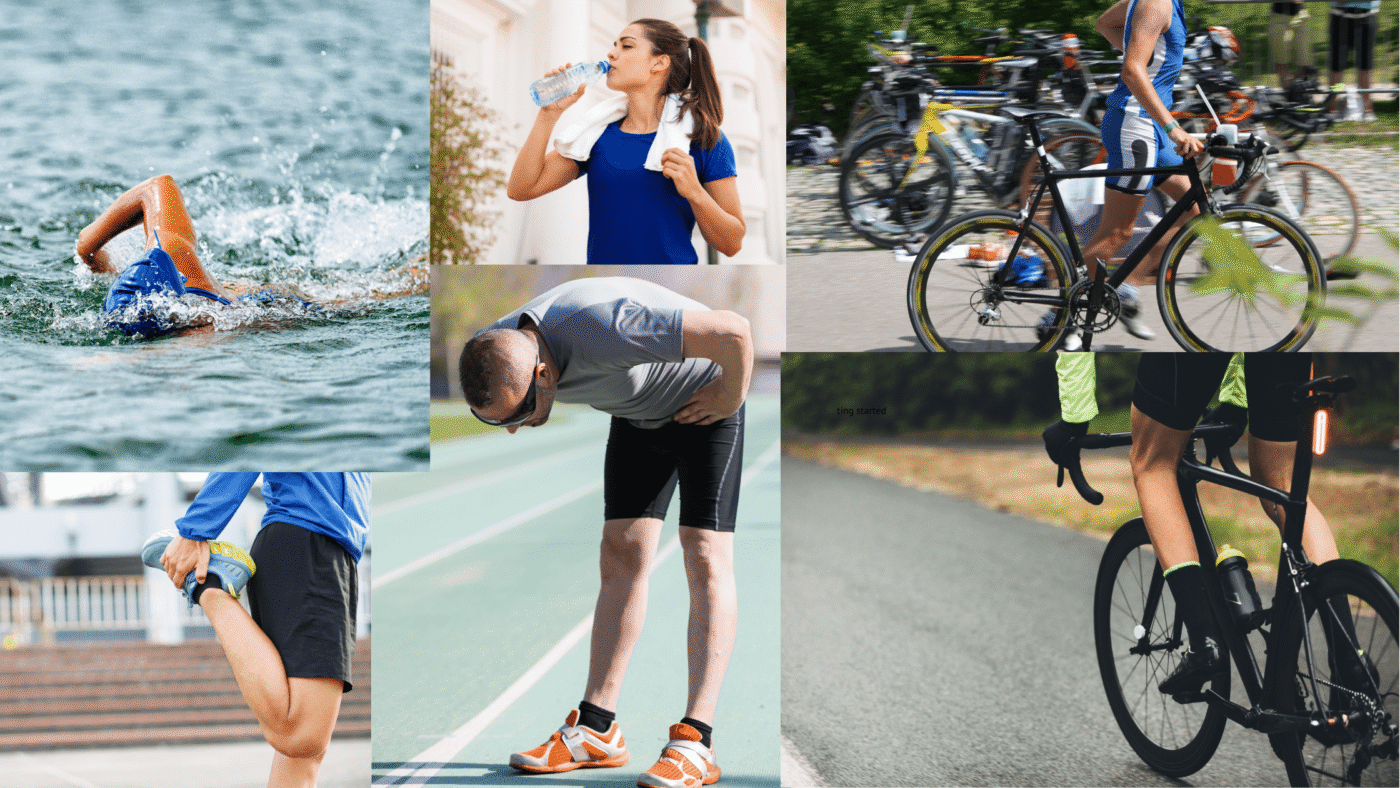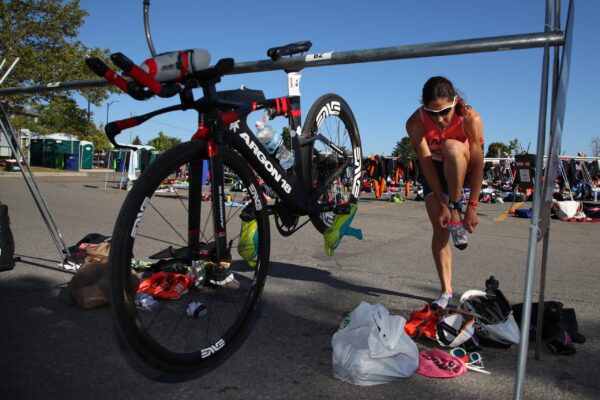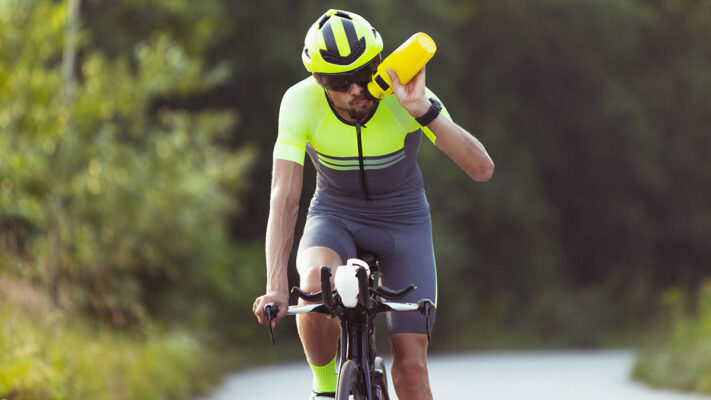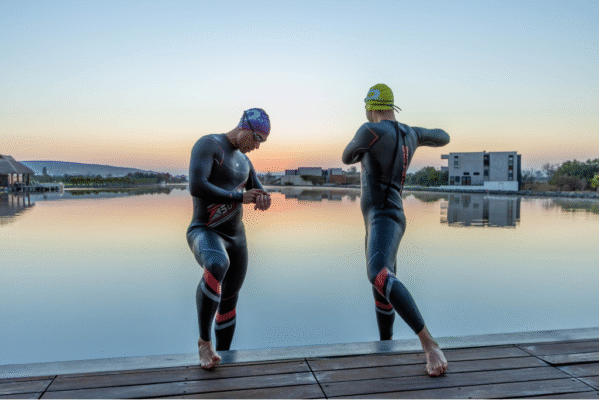posts
5 Beginner Triathlon Mistakes to Avoid
Introduction
Starting your triathlon racing journey is exciting — but it can also be intimidating. The mix of swimming, cycling, and running challenges every part of your body, and even small mistakes can make a big difference on race day.
At Tri-n-Win, we’ve trained, raced with countless athletes. We’ve seen how beginners often repeat the same simple errors — mistakes that are easy to fix once you know what to look for. This guide breaks down the five most common beginner triathlon mistakes, why they happen, and how to prevent them so you can train smarter, save energy, and truly enjoy the sport.
1) Skipping Gear Familiarization
Don’t Let Your Gear Surprise You
One of the easiest ways to ruin a race is using unfamiliar gear. Whether it’s your triathlon racing bike, your triathlon racing shoes, or your triathlon racing belt, every item needs to be tested during training — never for the first time on race day.
When you train with your race setup, you discover what actually works for you:
-
Does your bike fit comfortably over long rides?
-
Do your shoes cause blisters after running off the bike?
-
Can you grab nutrition from your belt easily while running?
 How to Fix It
How to Fix It
Simulate race conditions in your workouts. Do at least a few full “brick sessions” (bike + run) in your complete race kit. Practice transitions, hydration, and nutrition exactly as you plan to do them. The more familiar your gear feels, the calmer and more efficient you’ll be when the pressure’s on.
2) Ignoring Pacing and Overexertion
The Adrenaline Trap
At the start line, excitement and nerves push many beginners to go out too fast — especially in the swim or the first kilometers of the bike. They feel strong for a few minutes, then fade before the run even begins.
Triathlon racing is about control and endurance. Your goal isn’t to sprint each leg but to distribute your effort wisely so you finish strong.
How to Fix It
-
Know your zones: Learn your aerobic and threshold heart-rate zones in training.
-
Stay patient: Keep the swim comfortable, find rhythm on the bike, then build into your run.
-
Use devices wisely: GPS watches or bike computers help you monitor pace and effort, but also trust your perceived exertion — your body is the best gauge.
At Tri-n-Win, we remind every athlete: a strong finish feels better than a fast start.
3) Neglecting Transitions
The Forgotten Fourth Discipline
Transitions — from swim → bike (T1) and bike → run (T2) — can make or break your race. Many beginners treat transitions as rest stops, losing valuable minutes searching for gear or battling tangled straps.
How to Fix It
-
Plan your setup: Lay out your triathlon racing shoes, helmet, and triathlon racing belt in order of use. Keep everything neat and visible.
-
Rehearse often: Set up a mock transition area at home or the park. Practice mounting and dismounting your triathlon racing bike quickly but safely.
-
Use visual cues: A bright towel or small flag helps you spot your area fast.
With repetition, your body learns the sequence, and transitions become smooth, automatic movements that save time and energy.
4) Poor Nutrition and Hydration Planning
The Energy Equation
Nutrition mistakes can destroy your race, no matter how fit you are. Forgetting to eat, drinking too little, or trying new gels on race day can lead to fatigue and stomach problems.
During training, test your nutrition and hydration strategy. Learn which energy gels, bars, or drinks work best for you. Stay hydrated before and during the race — sip regularly on the bike and take small, consistent nutrition doses throughout. Smart fueling helps you finish strong.
How to Fix It
-
Fuel early and often: Begin hydrating the day before the race. During the event, sip fluids regularly and eat small, digestible carbohydrates every 30–45 minutes on the bike.
-
Train your gut: Practice using the same gels, bars, and drinks during workouts so your stomach adjusts.
-
Balance electrolytes: Water alone isn’t enough for long races — sodium and other electrolytes prevent cramps and dizziness.
Proper fueling keeps your mind sharp and muscles firing efficiently. At Tri-n-Win, we say: train your stomach as much as your legs.
5) Overlooking Rest and Recovery
Why Recovery Matters
Many beginners equate progress with pushing harder every day. The truth? Without recovery, your body can’t adapt, rebuild, or grow stronger. Overtraining leads to fatigue, injury, and burnout.
How to Fix It
-
Plan rest days: Take at least one full day off weekly.
-
Prioritize sleep: Aim for 7–9 hours per night to allow muscles to repair.
-
Include active recovery: Light swimming, cycling, or yoga keeps blood flowing and reduces stiffness.
-
Listen to your body: If you feel constantly sore or unmotivated, it’s time to rest.
Recovery isn’t laziness — it’s performance insurance. Respect it, and you’ll show up fresher, faster, and more motivated for your next training block.
Final Thoughts from Tri-n-Win
Triathlon racing is about balance — between effort and patience, training and recovery, excitement and control. Every athlete makes mistakes, but smart athletes learn from them early.
By avoiding these five common pitfalls, you’ll train more efficiently, save energy, and enjoy your races far more. At Tri-n-Win, we believe that every finish line represents growth, learning, and a new opportunity to win — in fitness, focus, and confidence.
So get organized, pace wisely, practice transitions, fuel smart, and rest well. That’s how you turn your first race into the start of a lifelong passion.


 How to
How to


